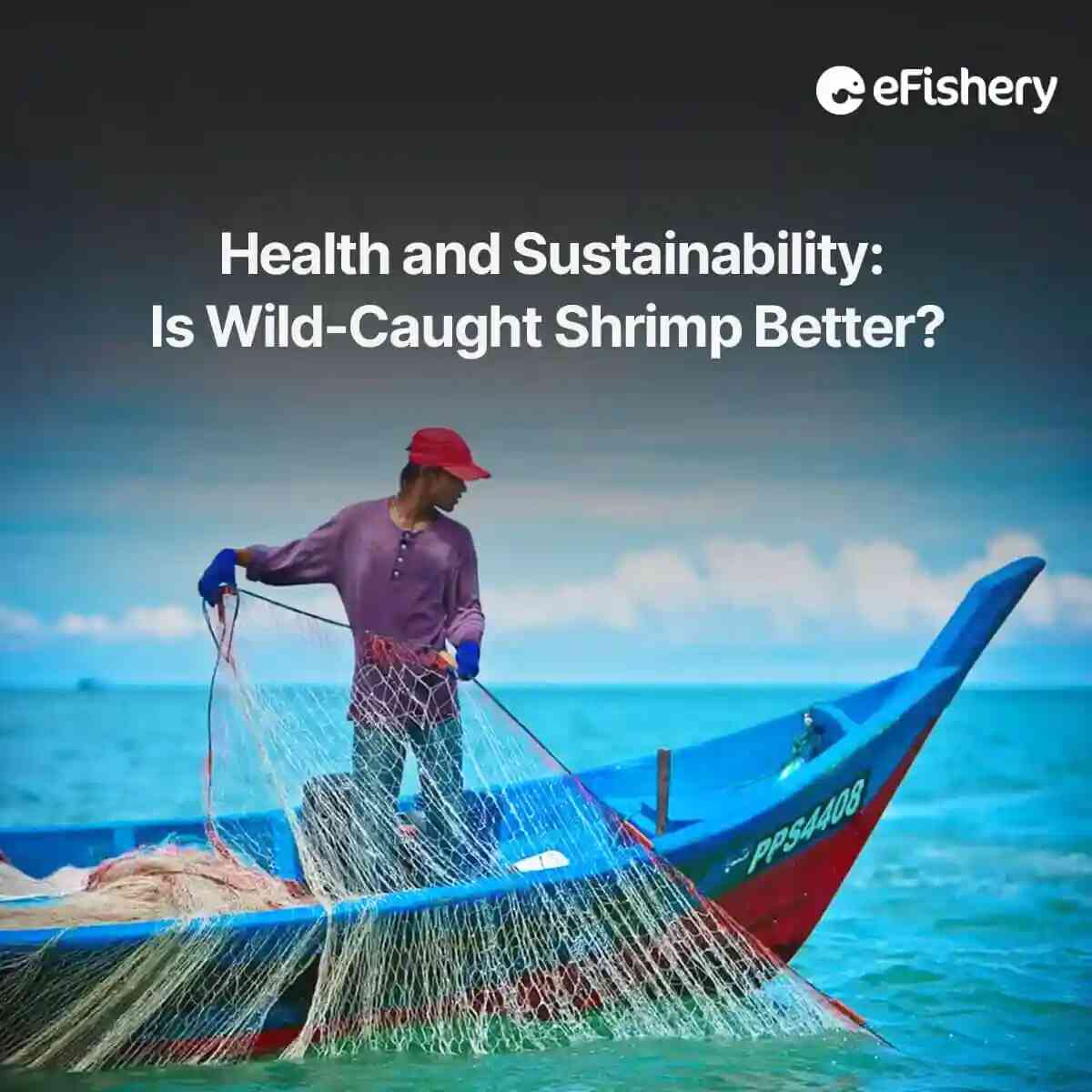Is wild-caught shrimp better? This seemingly simple question lies at the heart of a complex and nuanced discussion surrounding the sources of our seafood. In this article, we will delve into the world of wild-caught shrimp, examining its merits and limitations without the intention of glorifying or antagonizing this method of harvesting. By the end, we hope to provide you with a well-rounded understanding, allowing you to make informed choices when it comes to your seafood preferences.
We’ll take an honest and balanced approach, without any biases, so that you can make informed choices about your seafood preferences. We hope you’ll have a friendly and approachable understanding of this topic!
What Is Wild-Caught Shrimp?
Wild-caught shrimp, as the name suggests, are shrimp that are harvested from their natural habitats in oceans, seas, or other bodies of water. These shrimp are well-known for their rich nutrition and freshness. Moreover, wild-caught shrimp are natural scavengers, feeding on a wide variety of foods they find in their aquatic habitat. This diet may include algae, other dead shrimp, leftover fish food, living plants, and any decaying organic matter they come across.
Despite living under the sea as a scavenger, these shrimp are famously known for their deliciously unique flavor and are able to provide numerous health advantages, including Omega-3 fatty acids, protein, and antioxidants.
These shrimp are unique because they have different textures and come in various sizes. Wild-caught shrimp tend to be firmer because they move around a lot under the sea and consume different things.
Nonetheless, there are certain challenges associated with catching wild shrimp. According to the Monterey Bay Aquarium, on average, capturing one pound of wild-caught shrimp results in the unintentional capture of approximately six pounds of other marine species. In other words, obtaining just one pound of caught shrimp can cause as much as 20 pounds of unintended harm or wasteful destruction to other marine creatures, such as sea turtles and starfish.
How to Trace the Origin of Your Shrimp
When it comes to identifying the source of wild-caught shrimp, it can be more challenging compared to farmed shrimp due to the nature of wild-caught fisheries. Shrimp are harvested from vast and often remote expanses of the ocean, where tracking the exact location and method of capture can be difficult. Although some suppliers provide clear labeling on their packaging, not all do, which can make it challenging for consumers to make an informed decision.
To gain a better understanding of the shrimp you purchase, it may require additional effort, such as seeking certification labels that guarantee sustainable practices or consulting with suppliers who prioritize transparency. When available, look for clear labeling on the packaging that specifies whether the shrimp is wild-caught or farmed. However, even if labeling is present, wild-caught shrimp are often a blend of various species and sources, making it difficult to pinpoint the origin of the product.
By taking the time to research and ask questions, consumers can make informed choices that align with their values and preferences.
Thus, Is Wild-Caught Shrimp Better?
The question of whether wild-caught shrimp is better is complex and multifaceted, and it depends largely on individual preferences and priorities. As we explore the merits of wild-caught shrimp, let’s consider both their health benefits and sustainability aspects, while keeping in mind that the decision ultimately rests with you.
1. Health Benefits
Wild-caught shrimp does offer certain health advantages. They tend to be lower in fat and calories, making them a desirable option for those who are mindful of their dietary choices. Furthermore, their diet consisting of natural marine organisms contributes to a unique flavor and nutritional profile, including essential minerals, vitamins, and omega-3 fatty acids. When it comes to selecting shrimp, some of you may perceive these as preferences.
2. Sustainability
However, the sustainability of wild-caught shrimp can be a point of concern. Their harvesting methods can sometimes result in the unintentional capture of other marine species, which can impact the ecological balance. In response to these challenges, numerous organizations and fisheries have embraced sustainable practices and certifications to reduce the environmental impact of wild-caught shrimp by developing shrimp farming with the focus of sustainability. By supporting these initiatives and seeking sustainably sourced farmed shrimp, consumers can participate in promoting responsible shrimp sourcing and preserving the health of the oceans.
Source: eFishery Documentary
Final Thoughts
The debate over whether wild-caught shrimp is unquestionably the best, the healthiest, or the most flavorful option is nuanced and multifaceted. It’s essential to note that every individual has their own unique values and preferences that shape their choice. While wild-caught shrimp offers unique characteristics and a slightly more robust flavor, farmed shrimp possesses its own merits, such as a milder taste. Those who prefer a more delicate flavor profile may find farmed shrimp a more suitable option.
In essence, the beauty of this debate lies in its diversity, enabling consumers to choose based on their distinct tastes and priorities. Therefore, the answer to these questions is not universal, but it allows for a range of choices that cater to individual palates and values.
Discover more about Wild vs Farmed Shrimp on our page: Delving into the Differences Between Wild vs Farmed Shrimp
Sources:
- https://americanshrimp.com/shrimp-school-how-shrimpers-actually-catch-wild-caught-shrimp/
- https://medium.com/sustainable-seafood/why-wild-caught-shrimp-arent-as-innocent-as-you-think-974e9053638c
- https://sharkresearch.earth.miami.edu/commercial-shrimp-trawling-the-profit-does-not-out-weigh-the-damaging-effects-on-rest-of-the-ecosystem/
- https://modestfish.com/what-do-freshwater-shrimp-eat/#:~:text=Shrimp%20are%20scavengers%20and%20eat,and%20any%20decaying%20organic%20matter.
- https://www.feednavigator.com/Article/2016/04/20/What-makes-feed-more-appealing-for-farm-raised-shrimp
